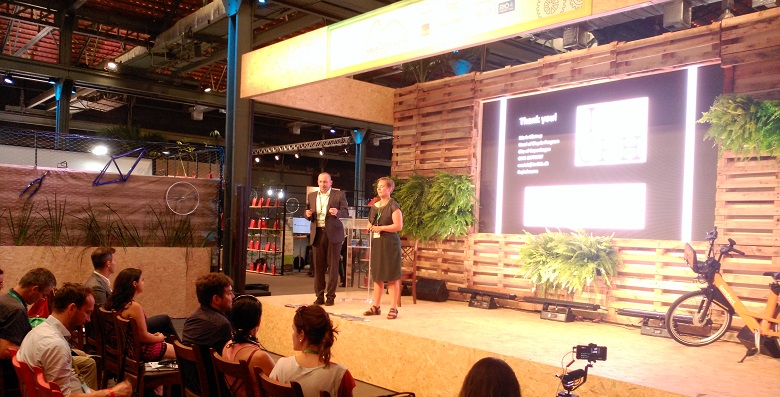
Velo-city day 1: Infrastructure - Small vs Big City Design
In the first infrastructural session on Velo-city 2018 we discussed the challenges related to the design of cycling infrastructure in cities and metropolises of developing countries. How design impacts cycling levels, real and perceived safety, travel times, comfort of users, attractiveness of urban spaces? How to adapt design to spatial, economical, but also political constraints? How to find space for high quality cycle infrastructure in large and crowded cities? How to prioritize cycling investments?
Marie Kåstrup manages the City of Copenhagen’s Bicycle Program, overseeing the strategic development of all cycling-related initiatives. She shared lessons learned in Copenhagen on prioritizing, upgrading and implementing bicycle infrastructure. She recommended focusing on closing the missing links in bicycle network and pilot projects with temporary traffic arrangement to get public support for more expensive investments. She presented the cycle of planning, construction and monitoring the use of cycle infrastructure and concluded “It took Copenhagen one hundred years to get its network of cycle paths, but you can do it faster”.
Ivo Mulders from ipv Delft inspired the audience with Dutch examples of bicycle bridge design, such as semi-submerged bicycle bridge in Harlem or Hovenring in Eindhoven. Bridges can close gaps in cycling network, shorten travel time, improve safety and become landmarks advertising cycling and cycle infrastructure. Ivo finished his presentation with some practical tips: “don’t be afraid to start with complex locations, utilise existing bridges and tunnels, combine bicycle bridges with car or railway bridges, look for a location that would optimise both costs and travel time”.
Alejandra Leal, Co-Director of Céntrico, presented a methodology of audit for intersections developed in Mexico. The methodology included 7 evaluation criteria, such as adequate speed, readability, short waiting times, direct trajectories, surface continuity, priority of passage, and visibility. In addition to giving a note, the diagnosis is linked to the improvement proposal, in terms of geometric design, traffic regulation, furniture, lighting or surfaces. Alejandra also introduced the concept of “tactical urbanism”, very similar to the pilots in Copenhagen: on several intersections selected entries or exits were narrowed with temporary bollards to improve the readability of the solution and reduce the exposure of pedestrians and cyclists.
Despite differences in context and approaches, all speakers agreed that good infrastructure is a key to ensure safety and increase cycling. “Right infrastructure helps people use the road correctly” – said Alejandra.
Contact the author
Recent news!
Upcoming events
Contact Us
Avenue des Arts, 7-8
Postal address: Rue de la Charité, 22
1210 Brussels, Belgium









